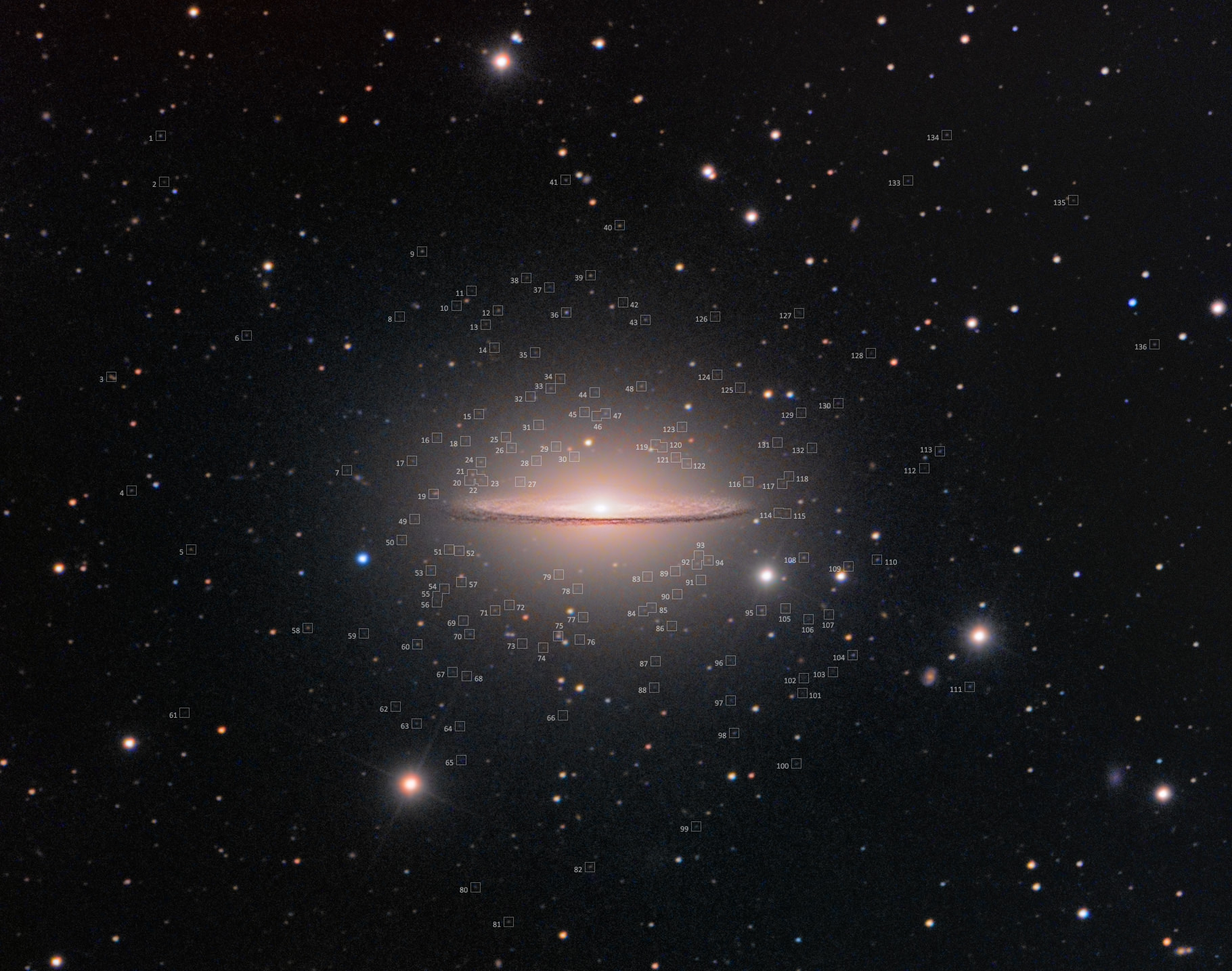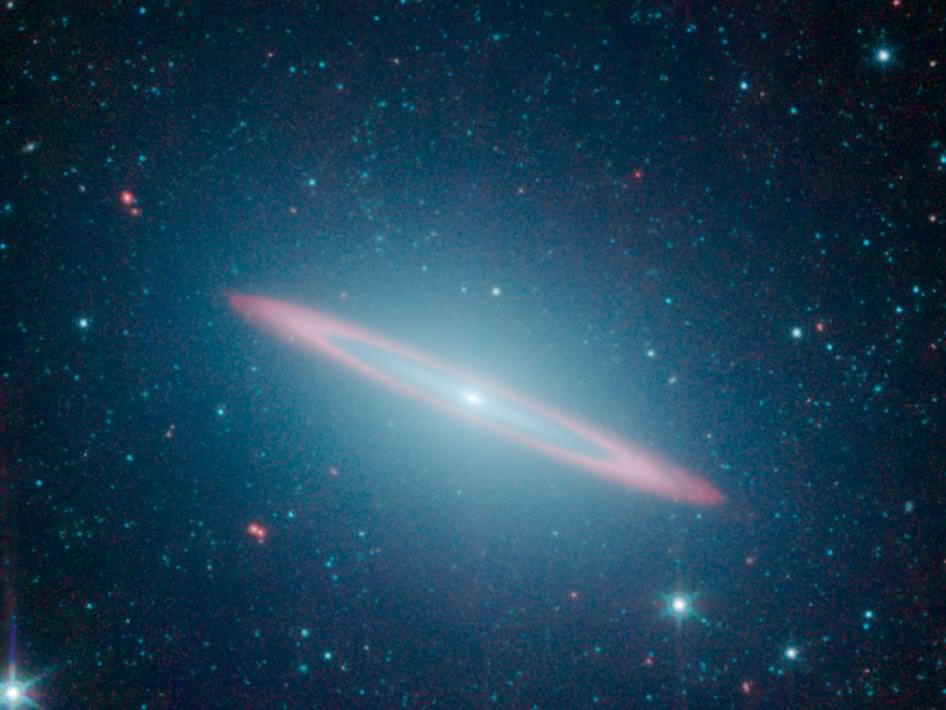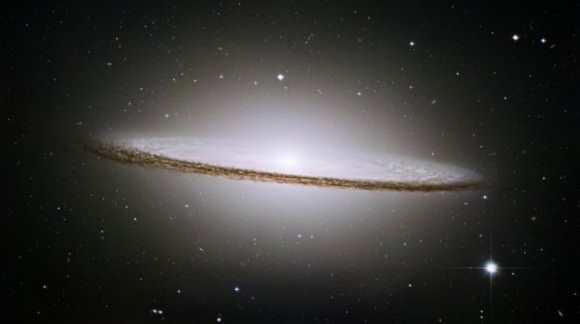[/caption]
You may recall in 2011 we featured an astrophoto by Rolf Wahl Olsen from New Zealand, who took the first amateur image of another solar system, Beta Pictoris. Olsen wrote to tell us he now has a new and better camera and recently focused on a new target with some incredible results.
“This time I have taken a very deep image of the famous Sombrero galaxy (Messier 104) showing 136 globular clusters around it,” Olsen said via email. “I have seen a few images before of the Sombrero with a couple of globular clusters identified, but not to this extent. It is really quite dramatic to be able to see how they literally swarm around the galaxy.”
Highlighted in this image are 136 of the Sombrero’s brightest globular clusters, ranging in magnitudes from 17.5 to 22+, the names and magnitude details of these clusters Olsen has listed on his website. This galaxy may have up to 1,900 in total of these satellite galaxies. Some of these globulars are very large and one is classified as a separate Ultra Compact Dwarf galaxy, SUCD1, the closest known example of such an object.
“I hope you enjoy it,” Olsen said. “This was certainly a fun project, though surprisingly laborious to mark and match all these faint clusters!”
Indeed, this seems to be a nearly Herculean task!
It is not known how the Sombrero amassed such a large number of globular clusters. While the Sombrero (M 104) is a disk galaxy, usually large elliptical galaxies typically have a greater concentration of clusters, such as the approximately 12,000 globular clusters orbiting the giant elliptical galaxy Messier 87. In comparison our own spiral Milky Way galaxy has only around 150-200 such clusters.
The Sombrero lies some 30 million light years away in the direction of the constellation Virgo.
You can find more information on Olsen’s website, and here’s a link to the full resolution image (1MB), which includes the list of details of all 136 globulars, and the unannotated full res image (1MB) is here.
Image details:
Date: 19th April, 22nd and 24th May 2012
Exposure: LRGB: 210:17:17:17m, total 4hrs 21mins
Telescope: 10″ Serrurier Truss Newtonian
Camera: QSI 683wsg with Lodestar guider
Filters: Astrodon LRGB E-Series Gen 2
Taken from Olsen’s observatory in Auckland, New Zealand
For more photos, check out Rolf’s astrophoto site.



